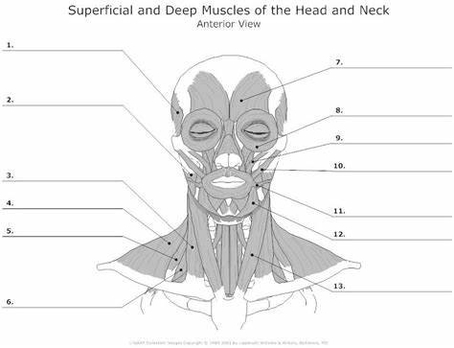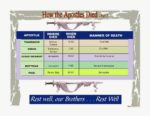The muscles of the head and neck are intricate and diverse, responsible for a variety of crucial tasks such as movement of the head and neck, chewing and swallowing, speech, facial expressions, and movement of the eyes. These tasks require both strong, forceful movements and some of the fastest, finest, and most delicate adjustments in the entire human body.
Facial Muscles
The muscles of the face are unique among groups of muscles in the body. While most muscles connect to and move only bones, facial muscles mostly connect bones to skin. These muscles, including the zygomaticus major and orbicularis oris, pull on the skin to produce a seemingly infinite number of facial expressions and to move the lips and cheeks during speech and eating.
Muscles of Mastication
Producing the bodys ability to close the mouth, bite, and chew food, the muscles of mastication move the mandible relative to the rest of the skull. These muscles, including the masseter and temporalis, elevate the jaw forcefully during chewing and gently during speech.
Muscles of the Tongue
An extensive complement of tightly interlaced muscles allows the tongue a range of complex movements for chewing and swallowing, as well as the important function of producing speech. Of these, four extrinsic muscle sets (connecting the tongue to the surrounding bones) move the tongue in virtually any direction, with fine shape changes (such as for speech) the province of the four intrinsic tongue muscles.
Muscles of the Eye
ix extrinsic eye muscles provide superior, inferior, lateral, and medial motion, as well as rotation of the eyeball. These muscles produce extremely fine movements almost constantly throughout the day with tremendous speed and accuracy.
Neck Muscles
The muscles of the neck are mainly responsible for the movement of the head in all directions. They consist of 3 main groups of muscles: anterior, lateral, and posterior groups, based on their position in the neck. The position of a muscle or group of muscles in the neck generally relates to the function of the muscles. For example, the muscles in the posterior neck are responsible for extension of the neck.
Anterior Neck Muscles
The anterior neck muscles are a group of muscles covering the anterior aspect of the neck. They are further divided into 3 subgroups: The superficial muscles are the most superficial in the anterior neck, and include the platysma and sternocleidomastoid. The suprahyoid muscles, as the name suggests, are found superior to the hyoid bone, and include the digastric, mylohyoid, geniohyoid and stylohyoid.
Posterior Neck Muscles
Posterior neck muscles include the splenius capitis and splenius cervicis, strap-like muscles in the back of your neck that help you extend and rotate your head. Suboccipital muscles are four muscles just below the occipital bone at the base of your skull. They help extend your head in different directions.
In conclusion, the muscles of the head and neck are complex and diverse, each serving a specific function that contributes to our daily activities. Understanding these muscles and their functions can provide insight into how we perform such tasks as speaking, eating, expressing emotions, and moving our heads.


